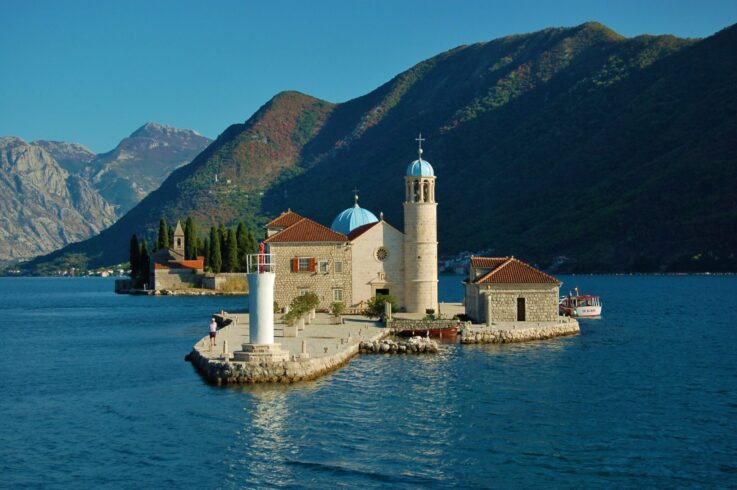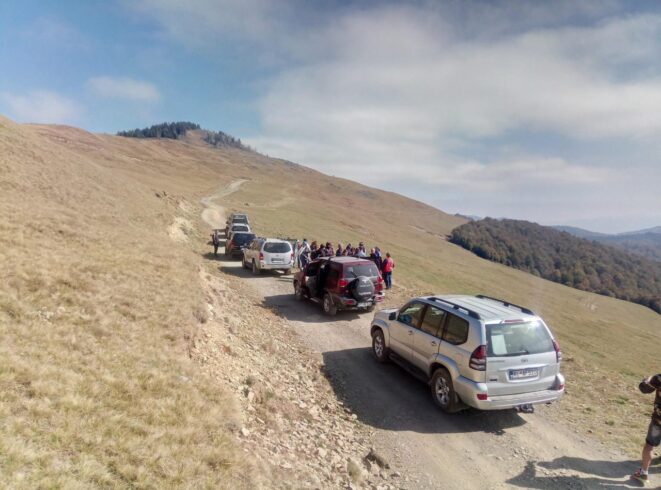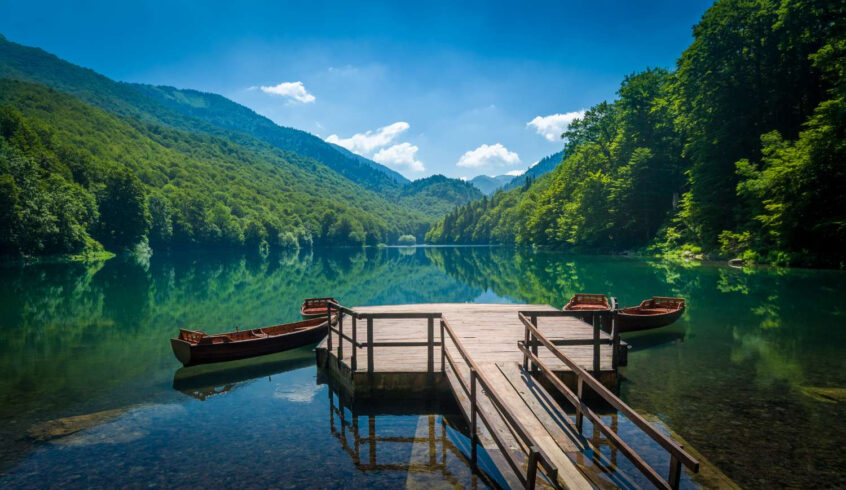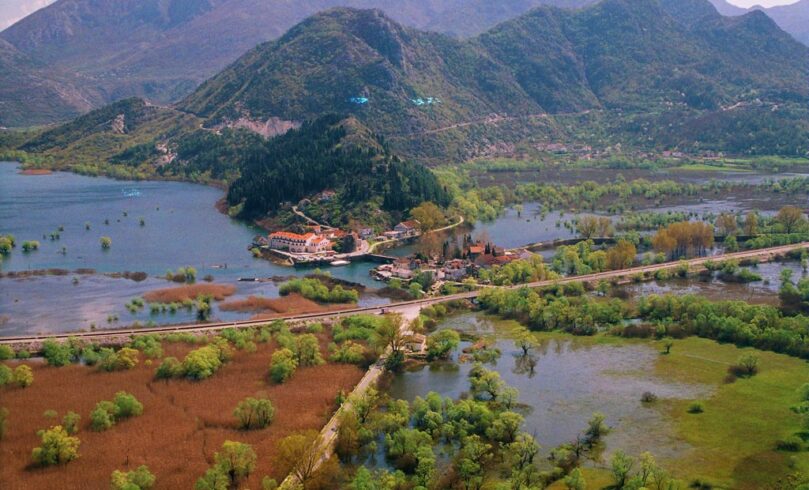Overview
This arrangement means visit to the different parts of Montenegro. You will be accommodated in the capital of Montenegro, Podgorica city, from where next days you will visit stunning Adriatic (Budva – metropolis of tourism, also known as ‘Queen of Adriatic’, Perast and island Our Lady of the Rocks, Kotor – under UNESCO protection, also in top 10 Europe destinations, Tivat – luxurious marina, called ‘Montenegrin Monaco’), have a rafting on Tara river known as ‘tear of Europe’ because of its clean water (its canyon is the deepest in Europe, and second deepest in the world after Colorado), enjoy ‘wild beauty‘ in the North, during jeep safari on Bjelasica mountain and in the one of the three remaining rainforests in Europe – National Park Biogradska Gora, visit Morača monastery (est. 1252), cruise on the largest lake in Balkan – Skadar lake, one of the richest bird habitats in Europe, visit Old Olive Tree – for which it is believed that is oldest in Europe and one of the oldest in the world, visit winery in Crmnica region ‘the homeland of the grapes‘and of course enjoy national specialties and premium wines in beautiful Montenegro. You will be fascinated driving by the Boka bay with a view on the azzur Adriatic sea and on the other side of the country with a mountain beauties and splendid landscapes. Enjoy central, south and north areas of Montenegro with the most beautiful activities, wine and traditional food tasting, will definitely be a part of the best memories in your life.
Come to us and chill out!
Podgorica is the capital of Montenegro located in the center of this country, at the intersection of several important road directions that lead from the sea to the continental part of the country. It is the main administrative, political, economic, traffic, scientific and educational – cultural center of Montenegro. It offers a wide range of discoveries to visitors through cultural heritage, archaeological sites, monuments, museums, and through nature in a national park, active holidays, views of canyons, rivers and bridges, as well as enjoyment of traditionally produced food and wine. In Podgorica there is one of the largest and most beautiful vineyards in Europe – ’’13. Jul Plantaže’’, covering 2,300 hectares, and all who visit the ‘’Šipčanik’’ basement have the opportunity to experience the impressive ambience of a unique wine cellar in Europe, enjoying the unforgettable smells and tastes of Montenegro.
Tara River is known for its clean water as the “tear of Europe”. With a length of 146.4 km it is the longest river in Montenegro. Its clear and icy water can be drunk in any part of the stream. It is one of the most attractive rivers in the world, created for lovers of adventure and active vacation. The last 25 km of Tara river and the canyon represent the most attractive part for rafting with beautiful landscapes and 20 most exciting rapids.
The Tara canyon is the deepest in Europe (1.333 m deep), and the second in the world after the Colorado canyon in America. The largest part of the Tara River, including its canyon, is under the protection of UNESCO as part of the Durmitor National Park since 1977, and it is one of the 25 most important natural sights.
Budva dates back 3,450 years ago and is one of the oldest cities on the Adriatic Sea. Budva has a large number of cultural and historical monuments, monasteries and churches that document the historical and social events in the area of the Budvanska Riviera. The most famous part of the city walls is called Citadel and is an interesting tourist attraction. It is also known for its sandy beaches, night life, the area of hotels and restaurants… Budva, also called ‘’Queen of Adriatic’’, is a prestigious destination on the tourist map of Europe and the world.
Perast is located in the heart of Boka Bay, at a distance of 12 km northwest of Kotor. In Perast, remains of the Neolithic culture (dating back to 3500) are found, before the new era, which speaks of its long unique history of long maritime, churches, palaces. Across the coast of Perast, near the coast, there are two beautiful islands that represent the special attraction of the city: Saint George which is natural, and the artificial island of Our Lady of the Rocks.
The legend says that on July 12, 1452, two fishermen found the icon of the Virgin Mary on the rock. The settlers thought it was a sign that the island and the church were to be built there and they called Our Lady of the Rocks. They threw rocks, as well as small boats and large ships damaged in fights fought to build an island. For this, they took 250 years. To date, the ritual throwing of stone around the island has been preserved. This manifestation is known as ”Fašinada” and is held on July 22, each year, as a monument on the day of iconography of the Virgin with little Christ in 1452 on the cliff. As the highlight of the ceremony, stones are cast into the sea around the island, and the ships return back. Traditionally, only men participate in the event. The church itself was built in 1630, and the octagonal chapel after forty years. A special significance in the museum is the famous needlepoint of the Virgin made by own hair, which is a vowel work by Perastanka Kunić from 1828.
See Kotor – surrounded by impressive city walls, very well preserved and included in the UNESCO list of the World Cultural and Natural Heritage. Kotor was nominated for the title of the best European destination in 2019, following the results achieved in 2018 at a competition conducted by European Best Destinations – EBD.
Tivat has a reputation as one of the sunniest places in the Bay of Kotor. Since 2011, it is home to one of the largest mariners in this part of the Adriatic Sea – Porto Montenegro – so at any moment you can find hundreds of yachts of different sizes and shapes with their owners from different meridians. Because of it, Tivat is called ”Montenegrin Monaco”.
Kolašin is a town in the north of Montenegro, 72 km away from Podgorica. It is at 954 m above sea level and offers excellent holidays in winter and summer. In Bjelasica there is a well-known ski resort just a few kilometers from the city. Many people call this city an aerial spa due to the height and extraordinary climatic conditions.
A special attraction for tourists is the National park Biogradska gora, the first declared national park in Montenegro in 1952 and it occupies an area of 5650 ha. Its protection dates back to 1878, when this area was given to the lord of Montenegro Prince Nikola Petrović, and it has since become the “Knjažev zabran” – ‘’Prince’s reserve’’. The most important natural value of this national park is the rainforest of Biogradska gora, which covers an area of 1600 hectares.
In the heart of the forest there is a beautiful Biogradsko lake, the largest and most famous of many glacier parks in the area of the national park. The rich flora and fauna of the National park Biogradska gora made it very interesting and attractive to many scientists, scientific observations and studies, as well as sightseeing tours and visits of nature lovers.
Monastery Morača (built in 1252) is one of the most monumental Orthodox medieval monuments of Montenegro. It is located on the right side of the river Morača, in the expanded part of the canyon, on the natural valley of picturesque landscapes, in the municipality of Kolašin.
Visiting this monastery you will feel the modest life of the seniors in harmony with nature.
Virpazar is a small fishing village, located on the road between Podgorica and the Montenegrin coast, at the confluence of the river Crmnica and Orahovica in the lake. In the past, it was a strategically important trading city but today this place serves as the main gate in the Skadar Lake National Park. It is also recognizable by local wines, which you can taste in family vineyards and cellars in the center and the surrounding area.
Skadar Lake is the largest lake in Montenegro and on the Balkan Peninsula, with an area of 369.7 km² (of which Montenegro has 221.8 and Albania 147.9 km²). The Montenegrin part of the lake with the coast was declared National Park in 1983.The lake has many islands and peninsula with traces of history and valuable cultural heritage: Žabljak (15th century) – the capital of the Crnojević dynasty, Lesendro – fortress on the rock at the lake, the borderline of the Montenegrin army in the era of Njegoš, the fortress Grmožur – the Montenegrin Alcatraz, in the period when Nikola Petrović ruled. The lake has 18 important historical monuments that witness to Montenegrin history from the 11th century to the present. The lake is known for its diversity of flora and fauna. Skadar Lake is a bird’s paradise, it has 264 bird species, and about 90% of them are migratory and of international importance. This is the only pelican habitat in southern Europe. The lake is an ideal location for observing birds because it is the largest bird reserve in Europe.
Bar is a maritime city in Montenegro located in the south of the country, between the Adriatic Sea and the Skadar Lake. It is a city with a large number of cultural events during the summer period, such as concerts, exhibitions, books promotions, children’s festivals, sports tournaments, etc. Harbor Bar is the largest Montenegrin port.
Old Bar is one of the most important archaeological sites in the world. Its streets are cross-country guides, from Greek colonies to the Middle Ages, the rule of Venetians to the Turkish period and up to the new era.
Near the town, there is a monument of the nature of the Old olive tree, an olive tree between 2,000 and 2,500 years old – the oldest tree in Europe, and also one of the oldest trees in the world.




































